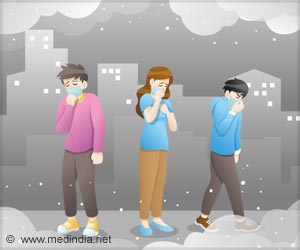Vertical transmission routes of coronavirus from mother to newborn have been identified and defined with more clarity. The transmission happens when the mother is pregnant with the baby, soon after delivery or by superficial exposure to coronavirus.
Highlights :
- COVID-19 infection of the mother during pregnancy has the potential to infect the newborn via transmission.
- Possible vertical transmission may either happen while the mother is pregnant or during and immediately after delivery of the baby
- If COVID-19 has been confirmed in the mother, a swab of the respiratory tract of the newborn in the first and second 24-hour periods is recommended
The study published in the American Journal of Perinatology highlights the importance of understanding the timing and route of mother-fetal transmission for the better clinical outcome by applying investigational therapies that could potentially decrease or eliminate transmission risk.
Evidence-based research on the routes and timings of transmission of coronavirus from the mother to fetus is missing. But three possible mechanisms of vertical transmission of coronavirus have been identified.
Read More..
Intrauterine Transmission
The period of pregnancy from conception up to delivery is the intrauterine period. The transmission that occurs when the mother is pregnant is the intrauterine transmission. This can occur when the fetus swallows the amniotic fluid that has viral particles. Sometimes, when the mother has severe coronavirus infection, the virus may be present in the blood, a condition known as viremia. This infected blood enters the fetus via the placenta, infecting it.Intrapartum Transmission
The transmission that occurs during the process of delivery or just after, is the intrapartum transmission. When the newborn is exposed to the mother’s blood or secretions it is known as early neonatal infection. It can also happen when the mother gets infected two weeks prior to delivery or two days after birth or when the baby has close contact with a caretaker who has the infection. Though the swab result maybe negative in the baby on the first day after birth, it can later become positive when tested between the second and fourteenth day due to the long incubation period of coronavirus.Transient Viremia
This occurs due to superficial exposure to coronavirus. Here, the baby’s respiratory fluids or blood tests positive or the virus gets detected in the umbilical cord or amniotic fluid on the first day after birth, but the baby is asymptomatic. But subsequent tests might be negative. This happens when the mother gets the infection two weeks before delivery or in two days after birth.Limitations of the Study
Antibody test of IgM antibodies done on the first day in babies may yield a false negative when intrauterine transmission occurs late in pregnancy. This is because IgM antibodies may be generated as early as three days or as late as four weeks after the onset of symptoms.On the other hand, the intrapartum infection can show a positive test by day seven. The reliability of IgM assays is yet to be established and igG testing’shave no role.
Also, the differentiation between intrapartum and early postnatal transmission of SARS-Cov-2 is not clear, due to the variability in the incubation period and the baby’s exposure to asymptomatic carriers or health care workers.
Conclusion
Dean Blumberg, the first author of the article and chief of pediatric infectious disease, states, "There is concern that mother's infection during pregnancy may result in transmission to the baby. We are pleased to have the opportunity to offer a framework to look at different possible transmission pathways."Physician in Chief of UC Davis Satyan Lakshminrusimha says, "In case of the mother's confirmed infection with SARS-CoV-2, we recommend as a minimum procedure a swab of the respiratory tract of the newborn in the first and second 24-hour periods. If the initial SARS-CoV-2 swab tests negative, it may be repeated if the baby shows symptoms. There may be a role for antibody testing in selected patients to diagnose past infection."
The findings will be helpful for future research that determines the clinical course of coronavirus and methods for interrupting transmission from mother to child. It will also help in clarifying the term vertical transmission for differentiating between intrauterine and intrapartum or early postnatal transmission of SARS-CoV-2.
Reference:
- Vertical Transmission of SARS-CoV-2: What is the Optimal Definition? - (https://www.thieme-connect.de/products/ejournals/abstract/10.1055/s-0040-1712457)
Source-Medindia










